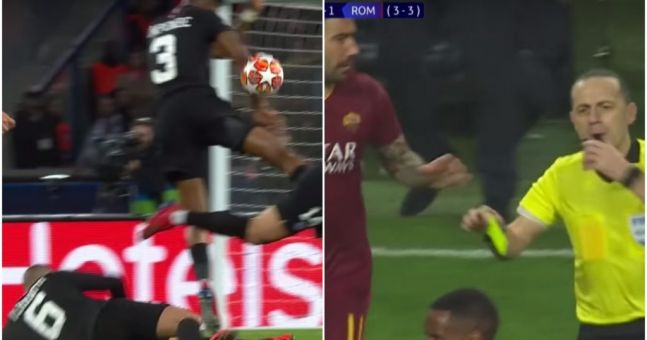

Nothing quite invigorates the senses like a football governing body trumpeting their own technical brilliance of a Friday afternoon.
But despite that nauseating feeling of being taunted with “We told you so’s”, UEFA’s unorthodox pluck to come out and explain how their officials went about determining a final outcome on four highly dramatic and controversial VAR decisions from the past week’s Champions League action, is somewhat of refreshing insight.
I don’t agree with all of these decisions, but the fact that @uefa actually come out and explain them afterwards is a big step forward compared to most leagues where ref decisions are never explained + everyone is guessing.https://t.co/pALamev7Xm
— Gabriele Marcotti (@Marcotti) March 8, 2019
It’s a week that will live in the memory for European football fans for a while to come, especially for those of an Ajax, Manchester United or FC Porto persuasion, after three of the four last 16 ties played over Tuesday and Wednesday resulted in sensational second-leg turnarounds.
On Tuesday, the Dutch champions travelled to the Bernebeau for the gargantuan task of over-turning a 2-1 home defeat by holders Real Madrid. But then…
Goals from Hakim Zyech, David Neres, Dusan Tadic and Lasse Schone gave the four-time winners of the competition a night to remember in the Spanish capital. However, Serbian Tadic’s goal was a source of protestation for Los Blancos after a suggestion the ball had crossed the line for a throw-in in the build-up to his 62nd-minute strike.
Referee Felix Brych did not conduct an on-field review to determine for himself had right-back Noussair Mazraoui kept the whole of the ball in play after camera angles used for VAR proved inconclusive in determining whether the ball had indeed gone out. The German instead relied on the information of his assistant, who was adamant that the goal should stand. And this got the big UEFA green tick. Well done lads.
Then came frenetic Wednesday.
PSG looked to be holding on by the skin of their sausages to progress on aggregate, despite trailing Manchester United 2-1 at the Parc des Princes until Diego Dalot’s audacious long-range effort struck the flailing arm of Presnel Kimpembe in the dying moments.
And whilst the video assistant took his time in relaying to on-field referee Damir Skomina that he should indeed consult his pitch-side monitor.
Europe held it’s breath whilst the Slovenian batted away a remonstrating Ole Gunnar Solskjaer, before electrifyingly awarding United a belated spot-kick, on the grounds that the defender had made his body bigger with the use of his arm, impeding the route of Dalot’s strike to goal.
UEFA have now explained the decision.
Following the on-field review, the referee confirmed that the distance that the ball travelled was not short and the impact could therefore not be unexpected. The defender’s arm was not close to the body, which made the defender’s body bigger thus resulting in the ball being stopped from travelling in the direction of the goal.
Hurrah.
Marcus Rashford smashed in the penalty and United booked their place in the quarter-finals on the away goals rule.
Video assistant for the Porto – Roma game, Szymon Marciniak was also in the thick of things having alerted match referee Cüneyt Çakır to a holding offence committed by Roma’s Alessandro Florenzi late into extra time at the home of the Portuguese champions. The Turkish whistler pointed to the spot after review, and Alex Telles duly converted from 12 yards sending the home side into a 4-3 aggregate lead.
There was further drama to follow, however, as Roma thought they too should have been awarded a penalty in injury-time at the end of the extra periods when Patrick Schick went down in the box after attention from Moussa Marega.
On this occasion, however, Çakır did not conduct an on-field review. He had been close enough to make a call on the action himself but did allow VAR to check for any reason why his own decision should be overruled. They found none, and the triumph of justice continues.

Be the first to comment